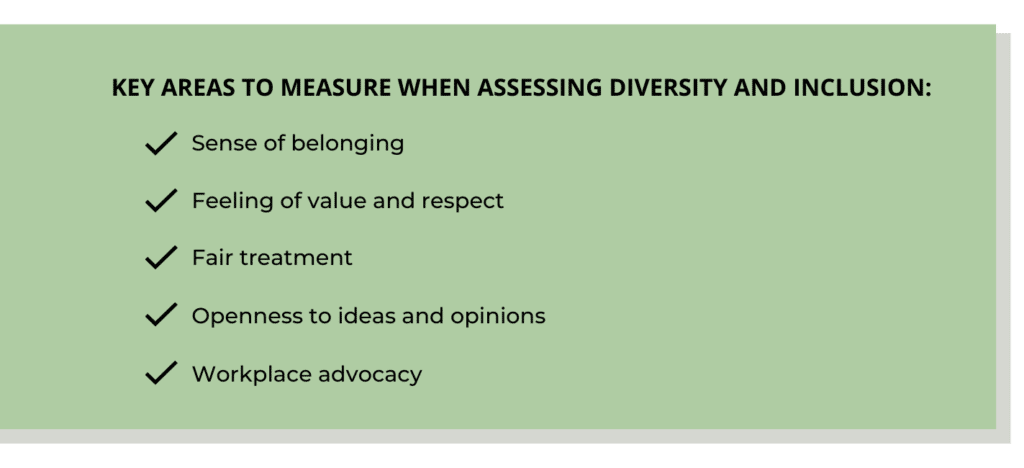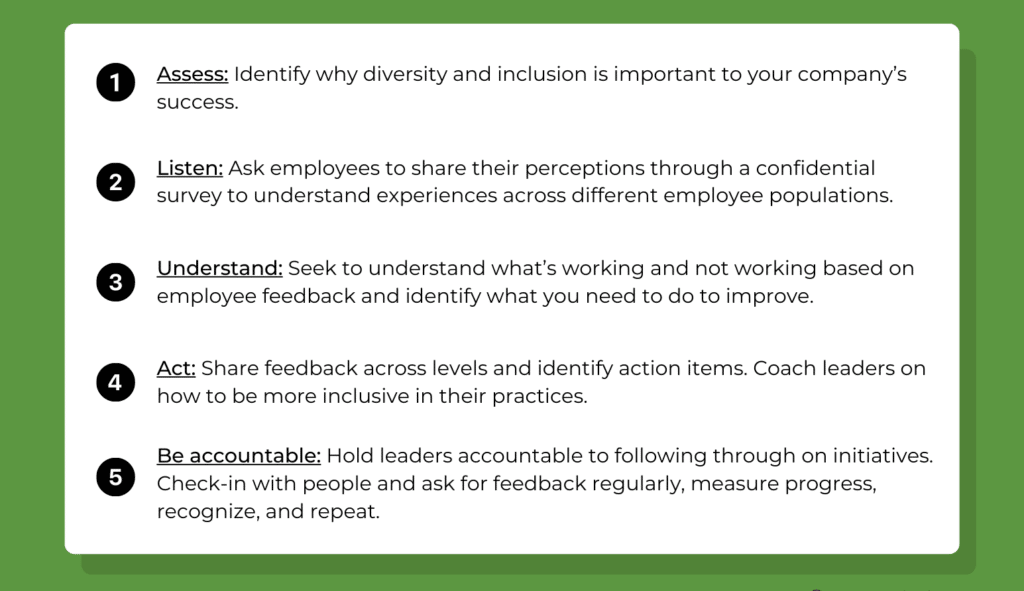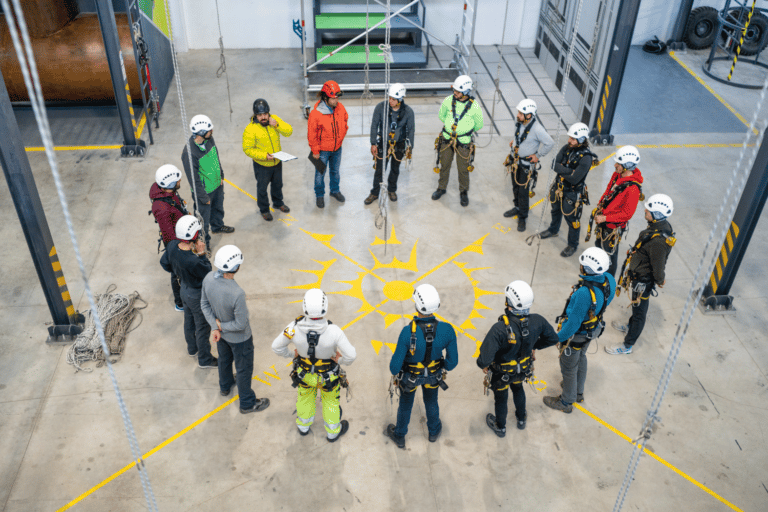Diversity, inclusion, and belonging. These are three words we hear just about everywhere in 2023 but do we know the real meaning behind them and why each piece is crucial to a healthy workplace? Let’s break down the definitions of each of these words, outline how to measure them, and explore how fully and genuinely embracing each one is necessary for real impact.
What Diversity, Inclusion and Belonging Mean
Although these words are often used interchangeably, they each have distinct meanings and we must understand how they interact with each other.

Diversity refers to the characteristics that make people unique, such as physical features, elements of personality, and culture.
Inclusion refers to the behaviors and cultural norms that make people feel welcome. Creating the distinction between diversity and inclusion is important to note because diversity can, and often does exist without the act of inclusion.
Belonging refers to an individual’s sense of acceptance. Belonging is usually the result of the level of inclusion an individual feels in their environment.
It becomes clear when these three definitions are laid out, that they are pieces of a whole and they all need to coexist and work in tandem.
How They Work Together
In the 2023 workplace, we see a large focus on only the first piece—diversity. More minorities and underrepresented groups are being hired and brought into organizations than ever before. This is wonderful, as more backgrounds and people are being represented in the workplace. Leaders need to remember that adding more diversity doesn’t automatically lead to positive outcomes without additional support. Fully embracing and creating an environment of inclusion is crucial and very necessary for the functionality of the workplace. In order for all employees to feel a sense of belonging, they need to feel heard, supported, respected, and given equal opportunities to participate and contribute. Oftentimes this involves reshaping power dynamics, leadership teams, and tone at the top.
Measuring Levels of Workplace Diversity, Inclusion, and Belonging
To develop an authentic and well-rounded strategy that accounts for all three pieces—diversity, inclusion, and belonging—you must look inwardly at your organization. You need to understand why and how diversity is important to leadership and your team. As the father of modern management Peter Drucker once said, “we can’t change what we don’t measure”. Begin with collecting feedback from your people to get a sense of the current state of your organization. Some key areas to focus on are the extent to which employees feel valued and respected, openness to ideas and opinions from leadership and peers, and their sense of belonging.

Closing the Loop
Just asking and getting insights on diversity and inclusion is not enough. Taking those employee insights and acting on them is how you will create a truly inclusive environment for all. The following five steps are a simplified approach that can be implemented:

As you see in the five steps above, measuring and improving your diversity and inclusion efforts is an ongoing process. People are dynamic and they are always changing. You’ll often have to repeat the steps annually to keep a pulse on how your people are feeling and adjust accordingly.
Outcomes of Embracing Diversity, Inclusion, and Belonging
When all three pieces are authentically embraced in the workplace, people thrive. It creates an environment where all people can feel accepted and valued. As a result, companies that create a culture of diversity and inclusion tend to have a more productive workforce and lower turnover. Bringing people in who have unique experiences, diverse backgrounds, and individual differences creates a dynamic and innovative workplace. Employees feel more connected with each other and have a shared sense of purpose around the organization.
A study by Deloitte found that when leaders are inclusive in their behaviors and actions it can lead up to a 70-point increase in the proportion of employees who feel highly included. As a result, teams can see up to a 17-point increase in performance, a 20-point increase in decision-making quality, and a 29-point increase in collaboration. Further, McKinsey & Company found that racially diverse teams tend to outperform less diverse competitors by 35 percent. Again, these outcomes were not simply a result of adding more diversity to their workforce but of the entire organization fully embracing a culture of inclusion over time.
KEY TAKEAWAYS:
- Diversity, Inclusion, and Belonging are not interchangeable words. They have distinct meanings and need to be focused on individually.
- Adding more diversity will not automatically reap workplace benefits.
- A culture of inclusion must be created and embraced for employees to feel a sense of belonging.
- Systematically measuring and assessing levels of diversity, inclusion, and belonging is key to creating a successful effort.
- Don’t forget to act on insights from employees and continually innovate your process.
- When leaders are inclusive, it can lead to increased performance, decision-making quality, and collaboration.
People Element is a leader in employee feedback surveys. You can measure diversity, inclusion, and belonging in your organization with our innovative employee listening platform. Get actionable insights from your people, easily make sense of the data, and start making a difference quickly. If you’re ready to build a better workplace, get started today with a discovery call with one of our experts.





